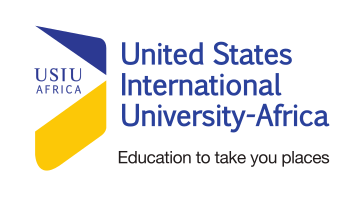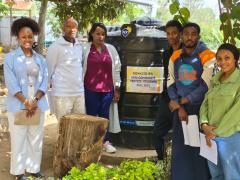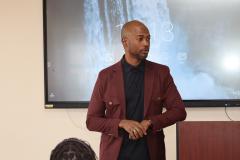International Women's Day
Intercontinental Hotel, Nairobi, March 8, 2017.
Paul Tiyambe Zeleza
Vice Chancellor and Professor of Humanities and Social Sciences
United States International University-Africa
Good afternoon! Mrs. Jordan, distinguished ladies and gentlemen, I wish to begin by thanking the organizers of this luncheon for the singular honor of asking me to address you this afternoon on this year's International Women's Day whose theme is “Be Bold for Change and Peace.” On this we celebrate women's achievements and remind ourselves of the continuous struggles for gender equality and women's empowerment. It requires us to mark the unsteady advances made and rededicate ourselves to this noble cause. To paraphrase the title of the first chapter in a report published by UNRISD in 2005 to commemorate the tenth anniversary of the 1995 Beijing UN Women's Conference, Gender Equality: Striving for Justice in an Unequal World, the trajectory of gender equality has been characterized by “uneven progress in an unequal world.” I was privileged to serve as one of the nine editors of the report.
The report focused on four areas: macroeconomics, wellbeing and gender equality; women, work and social policy; women in politics and public life; and gender, armed conflict and the search for peace. The report examined the changing social and economic status of women and the uneven gendered impact of the economic and political reforms of the reigning global ideology neoliberalism. It noted rising women's participation in the paid labor force and enrollments in primary, secondary, and even tertiary education. It evaluated women’s presence in the public sphere, their growing role as political actors in national legislatures, civil society organizations, and social movements. It examined the impact of conflict and war on women as victims and participants, and their complex roles in peace making, and post conflict reconciliation,resolution and reconstruction. It concluded that despite the notable progress made by women in many countries across various spheres, gender equality remained a distant dream for most women
Twelve years later it remains true that progress in gender equality remains uneven in a stubbornly unequal world. As noted by the annual report of UN Women covering 2015-2016, the struggle indeed continues. Gender parity in politics remains elusive although more women have entered the corridors of power as “Heads of State and CEOs of corporations, as parliamentarians, civil servants and at the helm of civil society organizations… [However], just 1 in 5 parliamentarians globally is a woman.” Similarly, women's economic contributions are immense and better recognized in official statistics and policies.
Women's participation in paid employment has rapidly increased. Nevertheless, “women in all regions continue to beoverrepresented in low-paid and vulnerable jobs. At the current pace, it will take 70 years to close the gender pay gap. In addition, shouldering the bulk of unpaid care work limits women’s opportunities.” The scourge of violence against Women and girls persists; its “devastating trail of trauma, injury and death,” robs millions of them opportunities to realize their full human potential. “One in three women,” the UN Women report grimly observes, “will experience some form of physical and/or sexual violence in her lifetime.”
The contradictory developments are evident in other spheres. More women than ever are involved and benefit from peace making processes. In 2010, for example, only 22% of peace agreements “included explicit commitments to women’s rights, participation and protection. In recent years, this share has climbed to half of all peace agreements.... and commissions of inquiry are paying more attention to gender-based crimes.” On the economic front, efforts to close the gender gaps have escalated, as “dozens of countries have begun to dramatically improve their track record in planning and spending to reach gender equality.”
Gender equality and empowerment of women and girls constitutes one of the 17 Sustainable Development Goals (SDGs). Its six targets include: ending all forms of discrimination against all women and girls everywhere; eliminating all forms of violence against all women and girls in the public and private spheres, including trafficking and sexual and other types of exploitation; eliminating all harmful practices, such as child, early and forced marriage and female genital mutilation; recognizing and valuing unpaid care and domestic work; ensuring women’s full and effective participation and equal opportunities for leadership at all levels of decision-making in political, economic and public life; and ensuring universalaccess to sexual and reproductive health and reproductive rights. In addition, eleven other goals include targets explicitly related to achieving gender equality.
As an educator, I trust you will understand if I conclude short remarks by briefly addressing the issue of gender disparities in education and what needs to be done. Since the adoption of the Beijing Platform and Plan for Action twenty-two years ago, remarkable progress has occurred in women’s and girl’s education. Let’s look at two side of the pyramid, primary and tertiary education. By 2014, to quote a report by UNESCO, “88% of girls of primary school age (about 6 to 11 years old) were enrolled inschool globally. The biggest gain was seen in sub-Saharan Africa where net enrollment among girls rose from 54% to 77%. Meanwhile, the out-of-school rate for girls declined from 18% in 2000 to 10% in 2014. The rate of boys out of school declined from 12% to 9%.” According to the UN report The World's Women 2015, "Today, 58 million children of primary school age are out of school worldwide. More than half of these are girls." Overall, improved educational access has raised global literacy rates. "However," the report states, "an estimated 781 million people aged 15 and over remain illiterate. Nearly two thirds of them are women, a proportion that has remained unchanged for two decades."
At the tertiary level, gross enrollment ratios for females rose from 19% in 2000 to about 35% in 2013, compared to from 19% to 31% for men. Thus, currently there are more women in higher education than men around the world. Africa, however, is the only region where men still outnumber women. We have to change that. Despite the progress, there are vast discrepancies in the academic programs for men and women. Globally the percentages of enrollments among women are higher than those among men in the social sciences, health and welfare programs and lower in engineering, manufacturing, and construction programs. The converse is true for men. Data shows less than 30% of the world’s researchers are women. This is particularly pronounced in the STEM fields, which translates into disproportionately fewer women in STEM careers. Even forwomen in STEM, to quote another UNESCO report, “numerous studies have found that women in STEM fields publish less, are paid less for their research and do not progress as far as men in their careers.”
At USIU-Africa, female enrollments are higher than those of males, 52% to 48%. However, a higher proportion of femalestudents are enrolled in the School of Humanities and Social Sciences than in the School of Science and Technology. Enrollments in the Schools of Business and Pharmacy and Health Sciences are more even. We are determined to increase female enrollments in STEM, an area in which we plan to invest heavily as part of our current Strategic Plan 2015/16- 2019/20.
We at USIU are very proud to be associated with Mrs. Deloris Jordan and the Kenya Women & Children’s Wellness Center. Mrs. Jordan has been a dedicated member of our University Council for many years. USIU will be the home of the Kenya Women & Children’s Wellness Hospital whose construction will start soon. Could I ask my colleagues from the USIUManagement Board and other colleagues to please stand up and greet the audience? We are a bold and daring University in promoting women's rights and empowerment. Both our chairs of the Board of Trustees and University Council are women.
All of us, in our respective sectors must be bold and daring, as Dr. Riria implored us earlier, by redoubling our efforts, rededicating ourselves to the enduring struggles for gender equality and women's empowerment. We must do so because it is our collective responsibility as citizens. Our nations and societies cannot realize the lofty objectives of the Sustainable Development Goals, as well well as national projects, such as our Vision 2030, for integrated, inclusive, and innovative sustainable development without realizing gender equality. Gender equality is more than an economic and educational imperative; it is an ethical and existential imperative for us as human beings because women's rights are human rights. Only by realizing gender equality and women's rights can we all, men and women, boys and girls, fully achieve our potential and possibilities as human beings. Thank you!






